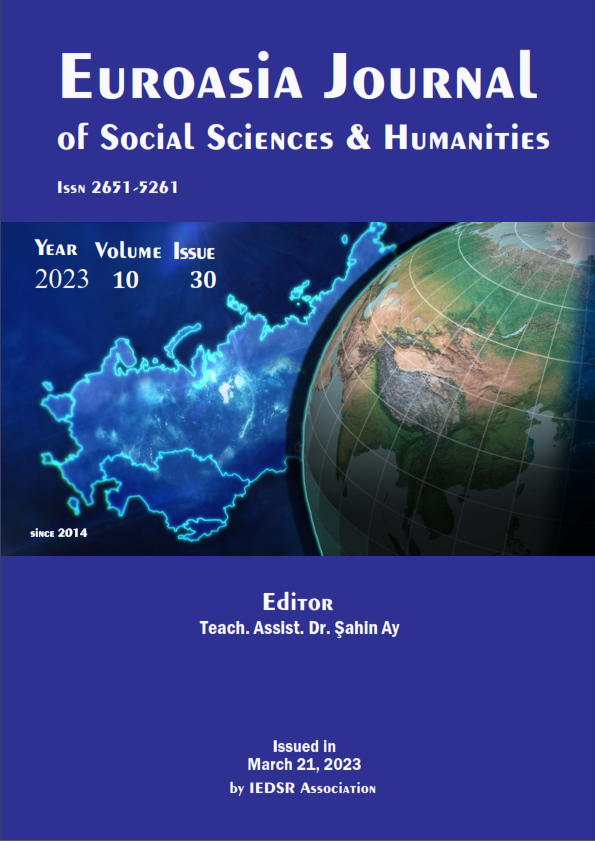FLAT MACHINE STITCHING
Embellishment
DOI:
https://doi.org/10.5281/zenodo.7757266Keywords:
Textile, Machine Sewing, EmbellishmentAbstract
Changing consumer demands, increasing competition conditions, technological developments have made change compulsory. In such an environment, where technology enters every stage of our lives, the desire of people to adorn does not change. There is a desire to see the beauty in the psychological structure of human beings. People's aesthetıc seekıng can appear ın dıfferent ways. The sewing process is applied by hand or machine to assemble, decorate and strengthen. Sewing progressed with the invention of iron needles in the Middle Ages. With the invention of the sewing machine by Bartholeme Thimmonier, sewing ceased to be a handicraft and became the beginning of efforts to make it faster with the help of the machine. It has been widely used in industry with technological developments. Ornamentation, which is a branch of fine arts, can be explained as transforming an object into a more beautiful and impressive one.
Adding an aesthetic value to clothing or fabric includes many emotions such as beauty, dignity and happiness. Hand-made decorations form the basis of machine-made decorations. Embellishment stitching can be done before or after assembling the product. It can be applied to add aesthetics to the appearance of the surface or to add functionality. Purpose of the research; was carried out in order to give information about the stitches made with a flat sewing machine for decoration on textile surfaces, to apply decoration techniques and to create a scientific resource. While creating the conceptual framework of the study, a literature review was made. At the same time, surface decoration techniques were applied by machine sewing and using various materials.
Downloads
References
Ayaydın, A., Üstün, Vural, D., Tuna, S., Gökay, Yılmaz, M., Sanat Eğitimi Ve Görsel Sanatlar Öğretimi, Pegem Akademi Yayınları, Ankara. 2009
Eronç, P. Y., (1971), Giyim Süsleme Teknikleri, (s.9). İstanbul: Milli Eğitim Yayınevi.
Küçükerman, Önder. Endüstri Tasarımı / Endüstri İçin Ürün Tasarımında Yaratıcılık, Yapı Endüstri Merkezi Yayınları, İstanbul. 1996
Udale, J. (2014). Tekstil ve moda. (H. Güngör, Çev). Oksijen Basım ve Matbaacılık. İstanbul.
Özpulat, F. (1994). Geleneksel kültürümüzde kırkpare. Tekstıl ve Mühendis Dergisi, 8(45), 37-41.
İnternet Kaynakları
Url-1 https://mis.historiska.se/mis/sok/fid.asp?fid=484163 Erişim Tarihi: 19.11.2022
Url-2https://www.indyturk.com/node/144356/ya%C5%9Fam/icad%C4%B1yla-tekstil-sekt%C3%B6r%C3%BCne-%C3%A7a%C4%9F-atlatan-frans%C4%B1z-mucidin-yoksulluk-i%C3%A7inde-sona-eren Erişim Tarihi:03.11.2022
Url-3 https://tr.pinterest.com/pin/402650022948257962/ Erişim Tarihi:03.11.2022
Url-4 https://tr.pinterest.com/pin/118852877644519974/ Erişim Tarihi:08.11.2022
URL-5 https://tr.pinterest.com/pin/640144534548316481/ Erişim Tarihi: 19.11.2022
Downloads
Published
How to Cite
Issue
Section
License
Copyright (c) 2023 EUROASIA JOURNAL OF SOCIAL SCIENCES & HUMANITIES

This work is licensed under a Creative Commons Attribution-NonCommercial 4.0 International License.

